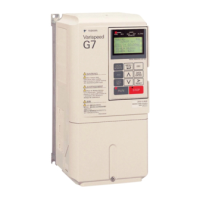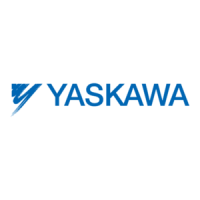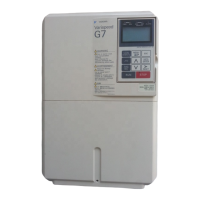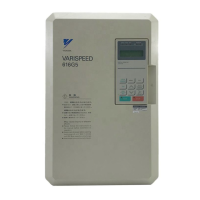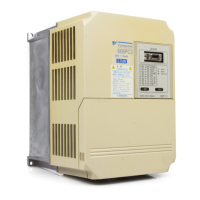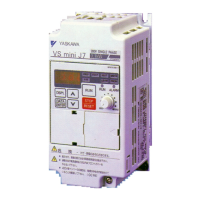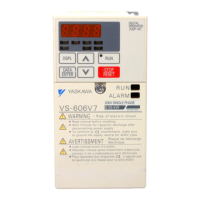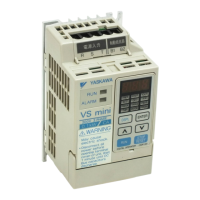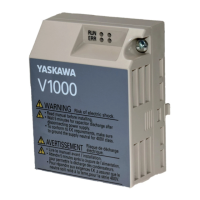Varispeed G7 Control Methods
10-
3
* 1. The variable speed control range. (For continuous operation, the motor's temperature rise must be considered.)
* 2. The speed deviation in relation to the maximum speed with a rated load and when the load is stable. (For open-loop vector 1 and 2 control, the motor temperature
must be 25°C ± 10°C.)
* 3. The speed response guidelines indicating the extent of the motor's actual speed gain in proportion to the speed reference, which changes in a sinusoidal wave
form, within a range where motor torque does not become saturated.
* 4. A guideline for the motor torque that can be generated when started at a low speed and its output frequency (rotations) at that time.
* 5. This function limits the maximum motor torque to protect the machine and the load.
* 6. This function directly controls the amount of torque being generated at the motor and its rotation direction, e.g., to control force.
* 7. This function controls the amount of motor slip that occurs to prevent mechanical shock, when replacing a torque motor, etc.
* 8. This function performs simple positioning control (servo lock), without using an external positioning control device.
* 9. This function instantaneously estimates (or detects) the speed and rotation direction of a coasting motor, and quickly starts it without subjecting it to shock.
* 10.This function automatically adjusts the voltage applied to the motor to optimize the motor's efficiency with light loads.
* 11.This function improves the deceleration time without using a braking resistor by making the motor winding absorb regenerative power. As a standard, this func-
tion is effective with a motor running on 160 kW or less with a high-inertia load.
* 12.This function enables proportional gain in relation to changes in the speed reference, even for low rigidity (corresponds to the servo's model gain control).
* 13.Set the maximum output frequency (E1-04) for open-loop vector 2 control to 60 Hz max. (120 Hz max. for PRG 102). For torque control on the regenerative
side, use in the speed range 1:10.
Appli-
cation
Func-
tions
Autotuning
Line-to-line resis-
tance (Normally
not required.)
Line-to-line resis-
tance (Normally
not required.)
Rotational auto-
tuning, stationary
autotuning, sta-
tionary autotuning
for line-to-line
resistance only
Rotational auto-
tuning, stationary
autotuning, sta-
tionary autotuning
for line-to-line
resistance only
Rotational auto-
tuning, stationary
autotuning, sta-
tionary autotuning
for line-to-line
resistance only
Torque
Limiting
*5
No No
Yes (except during
acceleration/decel-
eration, below
minimum fre-
quency, or during
reverse rotation)
Yes
Yes (except below
minimum fre-
quency and during
reverse rotation)
Torque
Control
*6
No No No Yes
Yes (except below
minimum fre-
quency and during
reverse rotation)
Droop
Control
*7
No No No
Yes (except for
0min
−1
and
during reverse
rotation)
Yes (Except below
minimum fre-
quency and during
reverse rotation)
Zero-servo
Control
*8
No No No Yes No
Speed Estima-
tion
(Detection)
Instantaneous
Speed
Search
*9
Yes (speed and
rotation direction
estimation)
Yes (speed detec-
tion and rotation
direction estima-
tion)
Yes (speed and
rotation direction
estimation)
Yes (speed and
rotation direction
detection)
Yes (speed and
rotation direction
estimation)
Automatic
Energy-sav-
ing Control
*10
Yes Yes Yes Yes Yes
High-slip
Braking
*11
Yes Yes
(Under
development)
(Under
development)
(Under
development)
Feed
Forward
Control
*12
No No No Yes Yes
Table 10.1 Overview and Features of Control Methods (Continued)
Control Method V/f Control
V/f Control with
PG
Open-loop Vec-
tor 1 Control
Flux Vector Con-
trol
Open-loop Vec-
tor 2 Control
TOE-S616-60.1.book 3 ページ 2017年8月4日 金曜日 午後3時41分
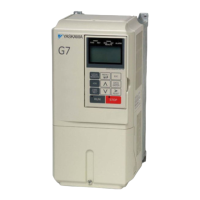
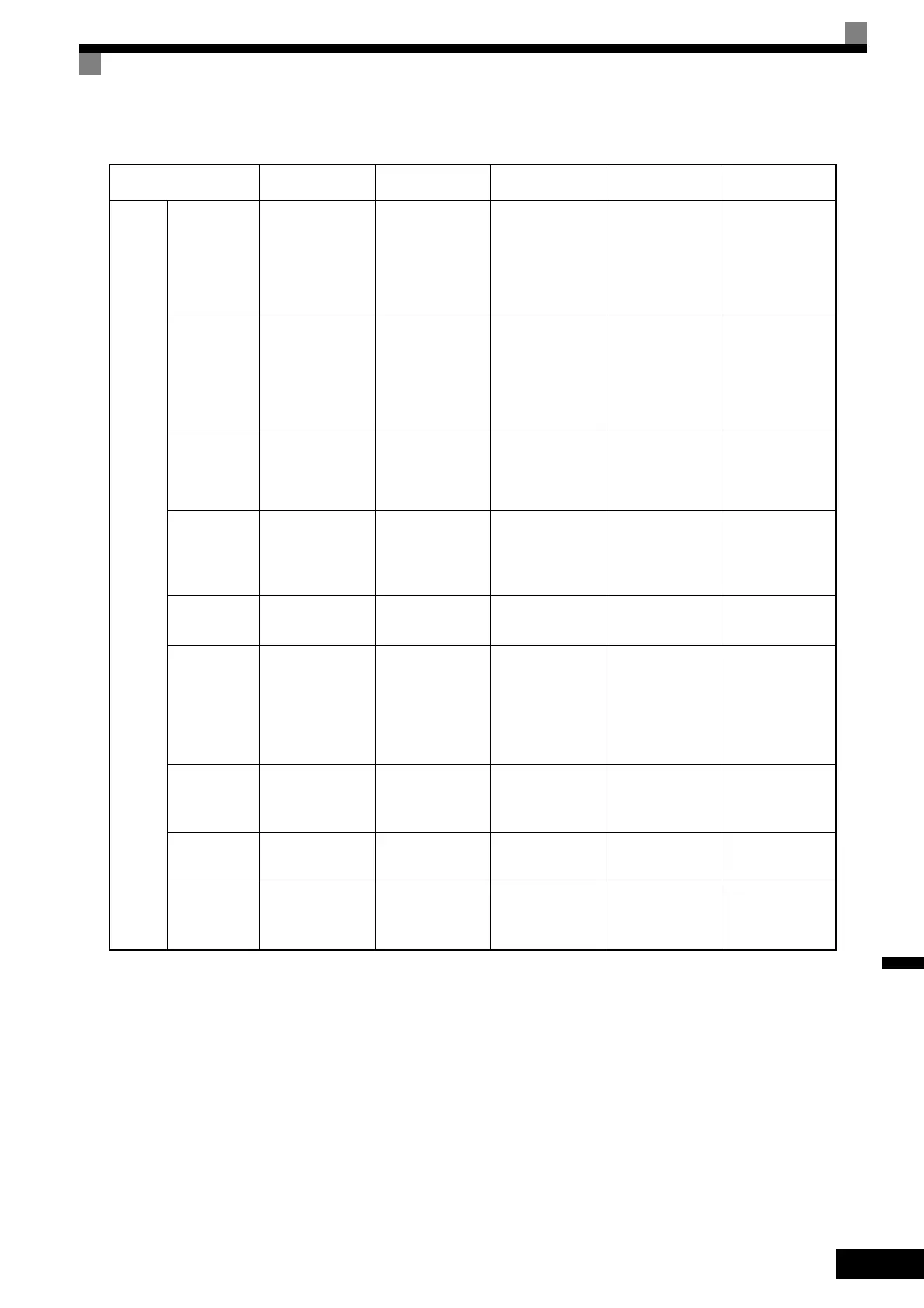